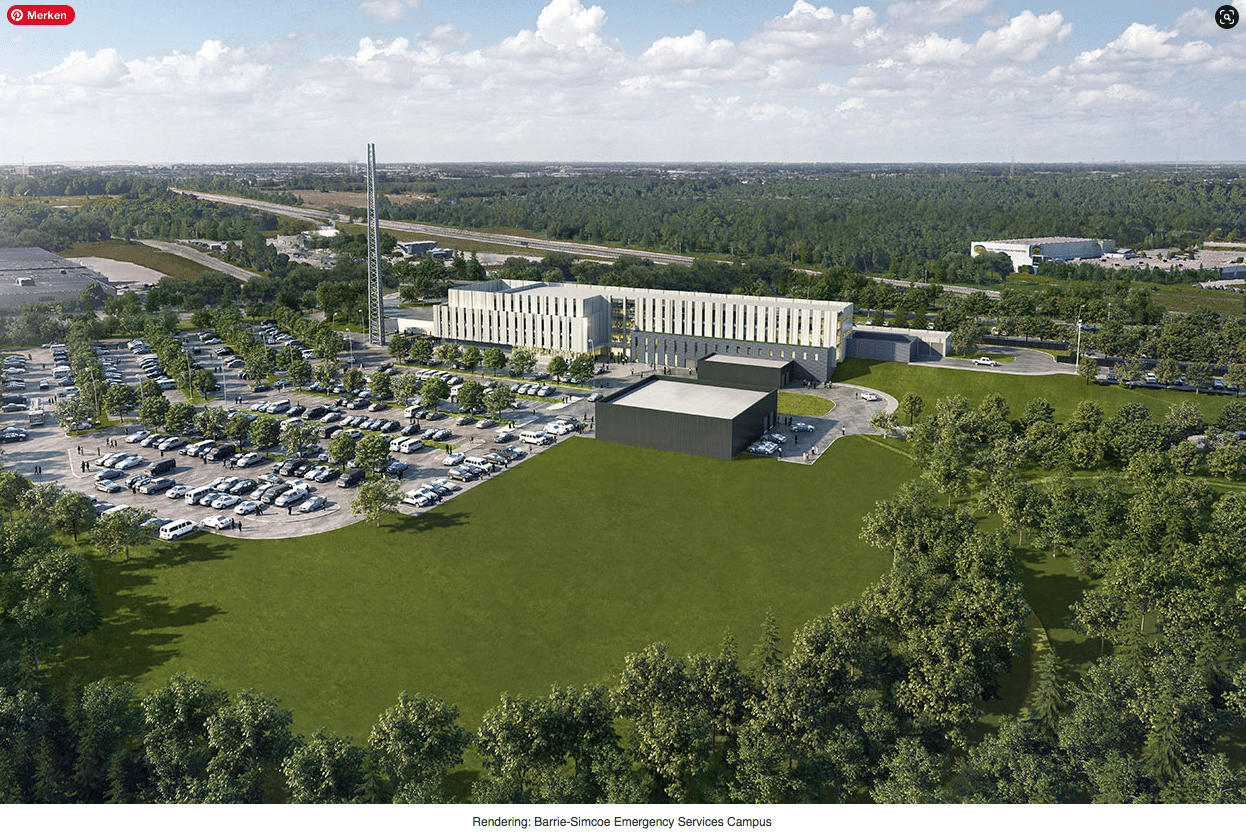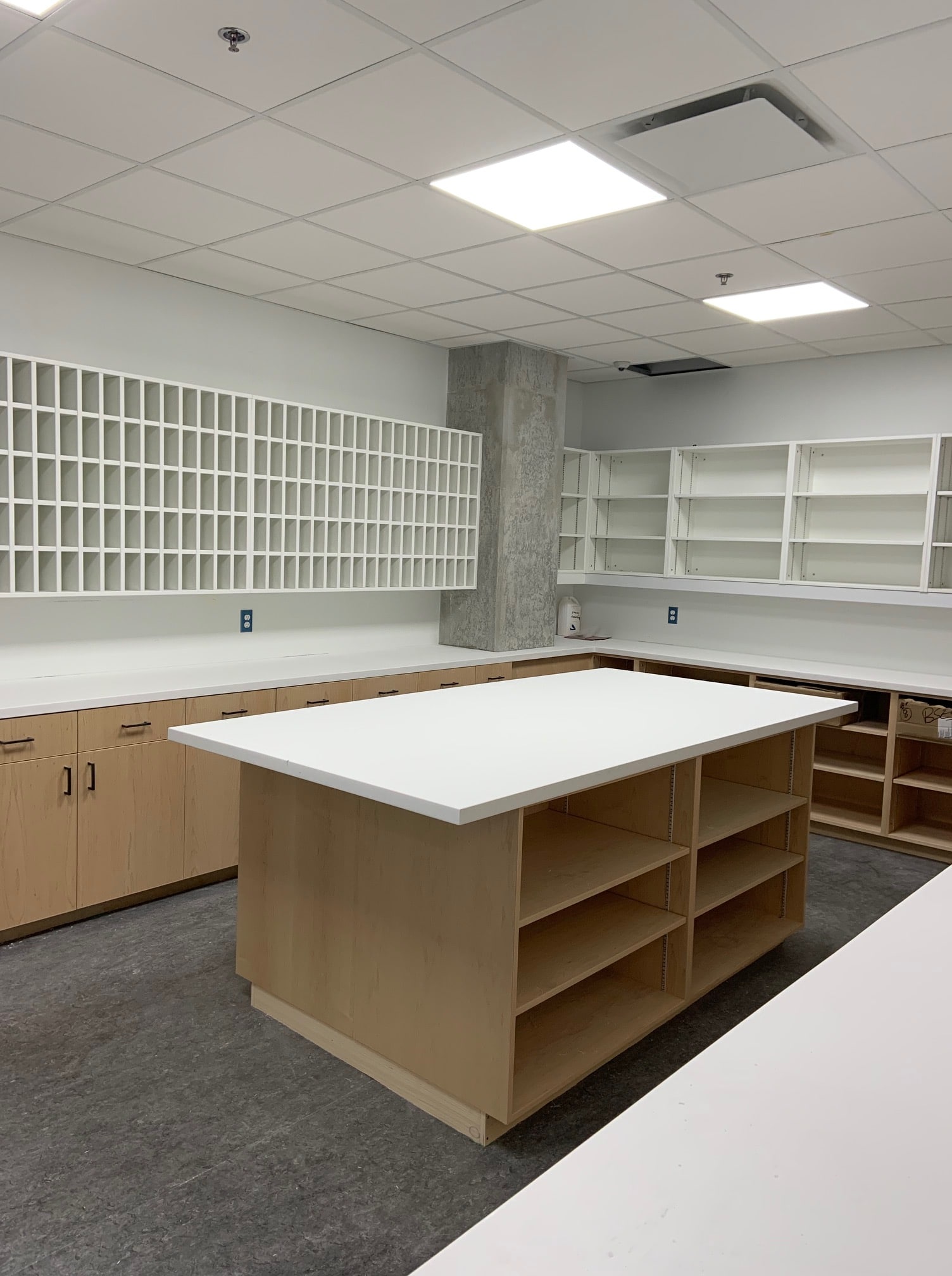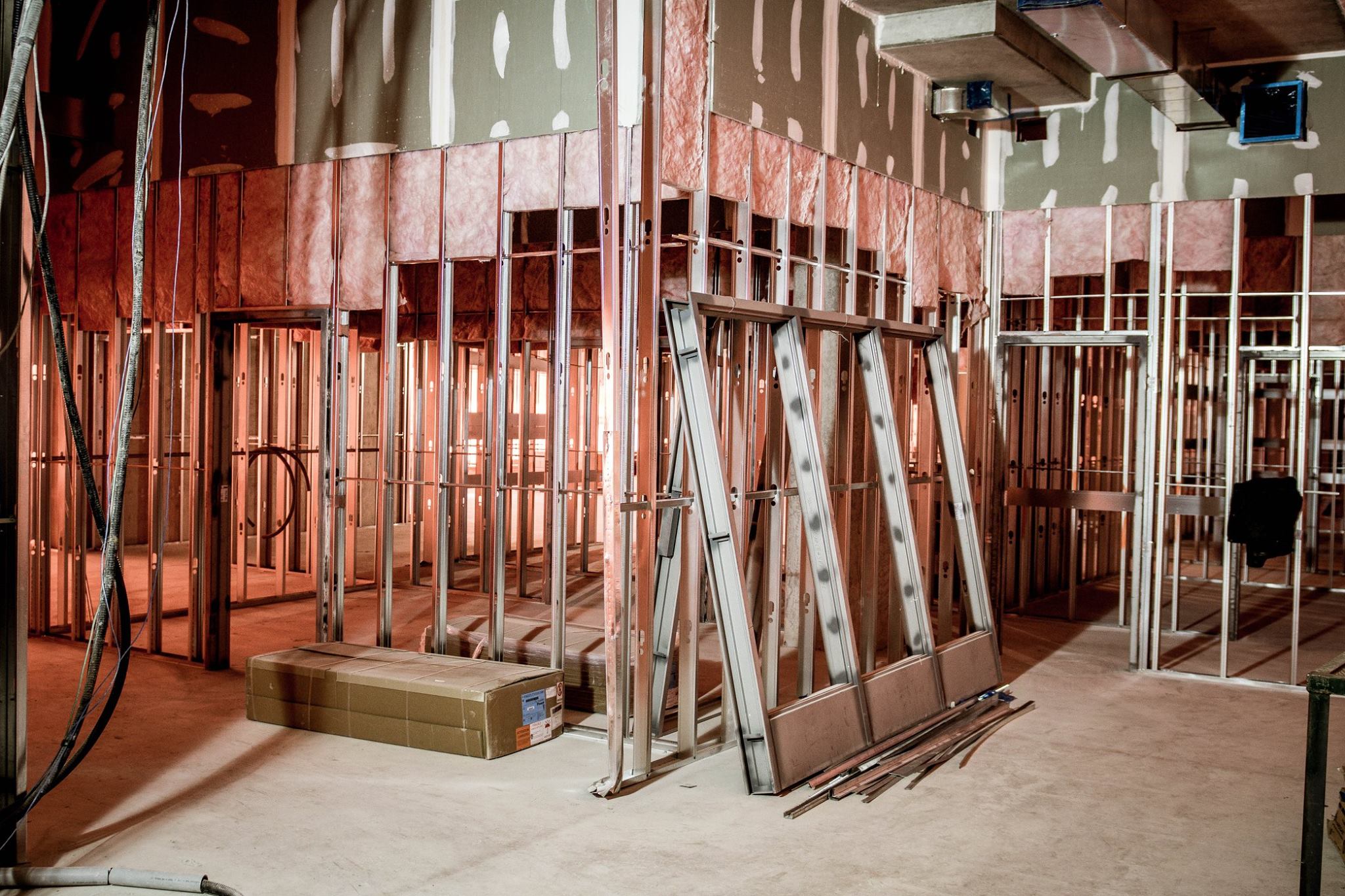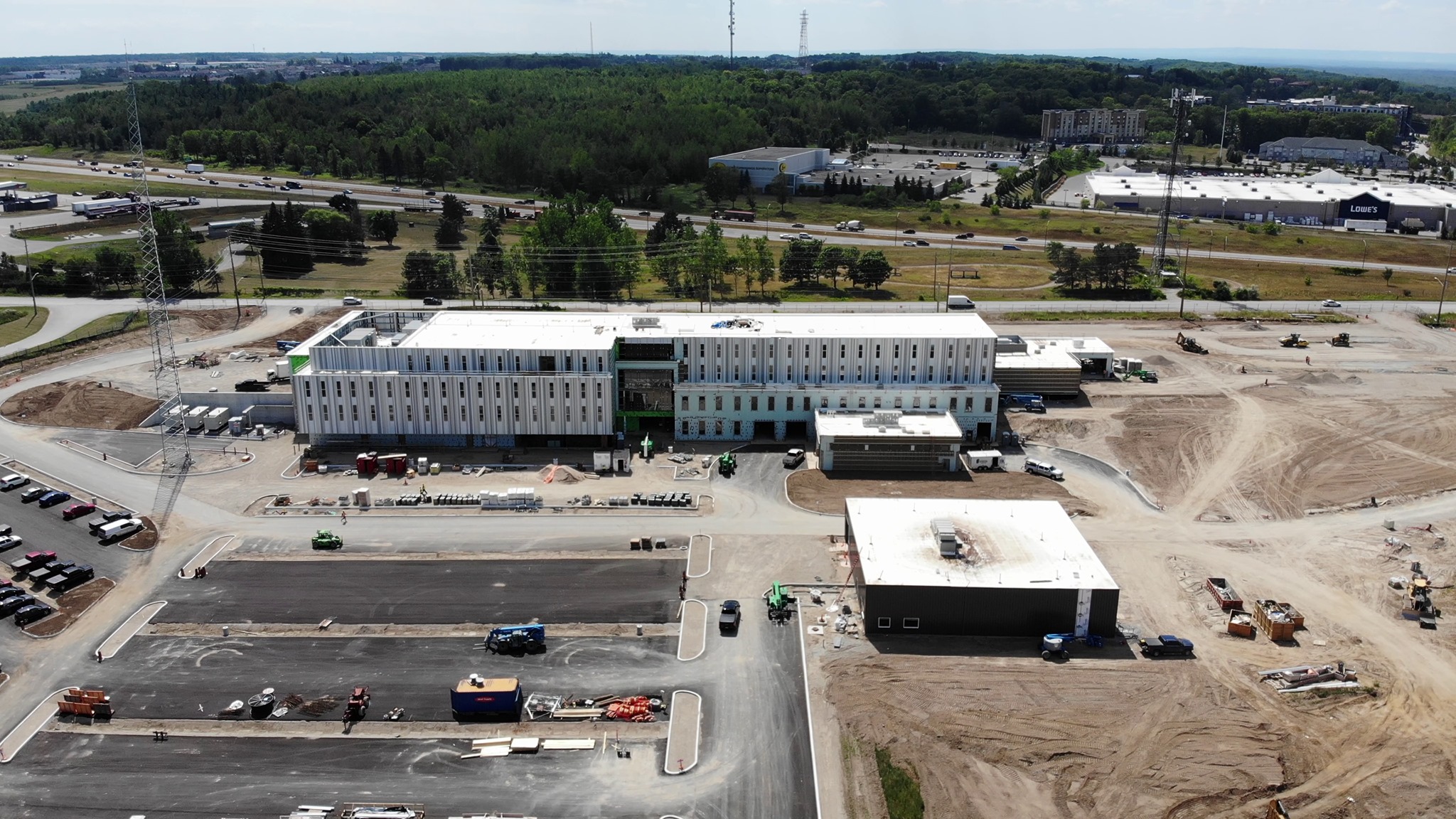The Barrie-Simcoe Emergency Services Campus (BSESC) was one of the first IPD projects in Ontario, Canada, in 2016 and a collaborative effort between the City of Barrie and the County of Simcoe co-owners, with a 75% and 25% interest respectively. The project concept aimed at uniting
- The Barrie Police Service,
- The Barrie Fire and Emergency Services, and
- The Simcoe County Paramedic Services
on a shared campus in a mutually beneficial collaboration structure.
This is the first of three Canadian IPD case studies we have documented in the new research report Investigating Factors Leading to IPD Project Success in Canada, which was co-authored by Ahmad Arar, M.Sc., PhD Candidate (case studies) and myself (Executive Summary, context, cross-case analysis, and conclusion).
A centralized platform to meet the needs of the community
The project’s vision focused on establishing a centralized platform from which the first responders could design and administer programs that would be most responsive to the community's present and future needs. The goal with the modern facilities was to improve efficiency among first responders while achieving savings both upfront and during operations.
The validation report emphasized that “The Barrie-Simcoe Emergency Services Campus will leverage both capital and operational efficiencies through a partnership that will foster innovative, collaborative, and sustainable values to support community growth, safety, care, and satisfaction. The campus concept provides a centralized platform from which our first responders can develop and implement programs that best meet the current and future needs of the community.”
As such, each partner would have access to more efficient and enhanced facilities via shared spaces and staff amenities than what would be practicable or economical in separate standalone buildings.

Project at a Glance
Building Type: Emergency Services
Project Type: New Construction
Location: Barrier, ON
Building Size: 190,000 sqft
Budget: $85,799,954
Schedule: 10 months Design, 28 months construction
Owner: City of Barrie and County of Simcoe
Architect: Lett Architects and AECOM
Contractor: Gillam Group and Chandos
Project Start: September 2016
Completion: January 2020
THE CHALLENGES
A project of this size presents many challenges, some of which we mention here.
Choosing the best delivery model
To start with, the project involved two owners and three end-users. As such, it was challenging to incorporate each party's benefit and maximize the value they accrued through the project.
Therefore, the project owners were looking for a delivery strategy through which they could successfully manage the expectations from all involved parties. Additionally, this project was both owners’ first experience working on a joint capital project of this size with another party. As a result, they needed to consider how to best collaborate to attain the value for which this partnership was developed
The owners voiced dissatisfaction with current industry practices. They were seeking innovative approaches to create value, reduce adversarial behaviour, and boost confidence in project outcomes. According to one of the owners, their existing procurement approach was inefficient and failed to provide the best value for projects mainly due to the lowest bidder approach. This approach often ended with projects running over budget due to frequent change orders and unexpected costs due to errors and omissions. As one owner stated, "Low bid pricing is not the way to go to move forward to strong North American designs, civic design, and excellence."
Developing the contract
As BSESC was one of the first IPD projects in Ontario, there was a lack of data, proven contract forms, and industry familiarity with the system. The contract drafting process became a lengthy exercise. The owner made sure that a joining agreement was signed during validation and then proceeded with the joining agreement into construction as negotiations and signing of the multi-party agreement were extensive.
Clarity of goals
The team defined soft goals and hard goals in the early phases of the project. They found it especially difficult to define the project's hard goals, particularly the project budget, which went through several rounds of attempts before being set and approved. Due to the owner's original budget being less than programmatical need, the RFP specifically stated that the team's responsibility was to assist in developing the overall project budget. However, allowable costs were a struggle throughout, and the cost estimating faced some challenges to include the owners' requirements and meet the allowable cost. Eventually, the joint efforts in the validation phase were the key to overcoming these challenges and setting the project forward.
Additionaly, recording the agreed-upon requirements and scope was another point of concern. According to one owner, ensuring that all requirements were clearly conveyed and recorded challenged the project team. Because of this, some items were overlooked in the validation report, particularly in the latter phases of the project.
Team selection
The BSESC project used an approach in which applicants were invited to submit their proposals as a group. According to the RFP documents, the team should include at least one Ontario-licensed architect, a contractor who will carry out the project's construction, and mechanical and electrical engineering professionals. The main motivation for requesting the teams to submit their proposals as a group was to avoid a lengthy public procurement procedure while ensuring the best fit for the project.
Decision structure
The team used the project values and objectives established earlier in the project as parameters in the decision matrix tool, which assisted them in making choices that were in the project's best interest. Most of the project decisions were initiated in the PITs and the final decisions were usually made in the PMT, which took the lead in managing all the important aspects of the project. In several instances, the large number of Project Management Team (PMT) members was seen as an obstacle, prolonging the decision-making process. Another challenge was to engage the Senior Management Team (SMT) better so that they could make the right decisions if needed.
The owners shared the view of the other team members that the decision matrix tool was very helpful in facilitating and managing the project's decision-making process. On the other hand, the owners believed that the documentation process could be improved.



Barrie-Simcoe Emergency Services Campus Interiors


All images: City of Barrie
THE SOLUTION: Choosing and implementing IPD and lean
The key considerations that prompted the owners of BSESC to embrace IPD and lean were
- The project’s characteristics
- Past unsatisfactory experiences with traditional project delivery systems, and
- Education on the benefits of IPD through conferences and communications.
The multi-stakeholder facility, in addition to the owners' tight budgets and it being a high-profile project in the public eye, were other major factors that led to choosing IPD.
Parameters such as delivering projects on or under budget, on or ahead of schedule, and owners expressing high satisfaction with the overall value delivered also appealed to the owners and played a key role in adopting IPD.
Pull planning and target value design
The BSESC project made efforts to adopt lean concepts and employ its tools and strategies to benefit the project. Pull planning, Last Planner, plus/delta, and target value design were the primary tools used. Many team members who were using pull planning for the first time deemed it to be very successful. Several of them indicated that they would continue to use pull planning in future projects.
Furthermore, they incorporated lean to identify methods to improve efficiency and decrease waste in processes. As one of the project architects indicated, "I just think the whole approach is how can we be more efficient, both in time, money, materials, and effort."
Collaboration
Throughout the BSESC project, when a positive aspect was highlighted, it was often related to the quality of the project collaborations. Once again, IPD demonstrated its immediate and considerable influence on collaboration and team culture. The team members expressed unanimously that the project involved a high level of collaboration, which directly led to its success. Many of the benefits and the impact of IPD on collaboration are discussed within the Big Room setting, including information sharing and communication.
The Project team
- Co-Owners: City of Barrie
- Co-Owners: County of Simcoe
- Architect of Concept: Lett Architects Inc.
- Architect of Record: AECOM Canada Ltd.
- Structural Engineer: LEA Consulting Ltd.
- Mechanical Engineer: AECOM Canada Ltd.
- Electrical Engineer: AECOM Canada Ltd.
- General Contractor: Joint venture (Gillam Group Inc. And Chandos Construction)
- Mechanical Contractor: Geo. A. Kelson Limited
- Electrical Contractor: Wallwin Electric Services Ltd.
- Drywall Contractor: Cesaroni Contracting Inc.
- Formwork & Concrete: Alliance Forming Ltd.
- Sprinkler Trade: Vipond Inc.
- Masonry Contractor: Ontario Fox Corp.
- Windows and Glazing Contractor: BMG Glass + Aluminum Inc.
RESULTS: Reaping the benefits of IPD and lean
The BSESC project was financially successful. The project demonstrated that the team met its incentive compensation layer (ICL) in full and earned additional incentives because of the savings produced. The owner also received their share of the savings, which were used to execute several Wishlist items.

Image: City of Barrie
KEY TAKEAWAYS
- The project involved two owners and three end-users. This made it a challenge to incorporate each party's benefit and maximize the value they accrued through the project.
- Procedures underlying the development of the contract were drawn out due to team members' lack of familiarity with the type of project and omission to include the contract form in the RFP documents.
- Concern arose relating to how to hold team members accountable for their cost estimates and performance in the light of IPD agreement.
- A more rigorous documentation process was required to adequately convey and record owner requirements and project decisions, while also considering as lean a process as possible.
- The main motivation for requesting the teams to submit their proposals as a group was to avoid a lengthy public procurement procedure while ensuring the best fit for the project.
- Joint ventures can provide a mechanism for contractors and architects with limited IPD experience to work with more knowledgeable firms, which enables knowledge transfer and helps to build industry capacity for these types of projects.
- Lack of clear championing and facilitation of IPD can lead to issues in fully benefitting from its advantages.
- Although the decision matrix was seen as an effective tool, the team reported that they should have documented contextual information and details that contributed to the decision.
- The large number of PMT participants was seen as an obstacle, prolonging, and straining the decision-making process.
- The team's usage of pull planning and target value design was the most apparent and successful component of adopting lean on the project.
- The extent of the lean application was determined to be limited. That was viewed as a missed opportunity by the team, especially given the high level of collaboration achieved within the team.
- The project demonstrated clear collaborative behavior and outcomes, such as transparency, fluid communication, and seamless information sharing.
- Completed on budget.
- Achieved savings in the risk register and granted some items of the Wishlist.
- 100% of the ICL was achieved.
For a detailed insight into this new research, download the full report Investigating Factors Leading to Project Success in Canada.
Stay tuned for the second part of this series about the Canada Games Aquatic Centre, Kamloops, British Columbia.
Related Articles
New Research Testifies IPD Project Success in Canada
Getting Decisions that Stick in Design and Construction
Learnings from the Field: An Architect’s Musing From Her First IPD Project
Erik is a professor in the Department of Construction Engineering at the École de Technologie Supérieure and co-director of the Groupe de recherche en intégration en développement durable en environnement bâti (GRIDD). He specializes in the integration and optimization of information flows within value chains in the built asset industry. Erik serves as Vice-Chair of the Quebec BIM Group, is a member of the Board of Directors of buildingSMART Canada and is the Mirror Committee Director of the Standards Council of Canada for ISO Technical Committee 59 - Technical Committee 13 (ISO TC59-SC13). He holds a Ph.D. and M.Sc. in Construction Engineering from École de Technologie Supérieure and a B.Sc. in Architecture from Université Laval. He also completed a postdoctoral fellowship at the University of British Columbia.




